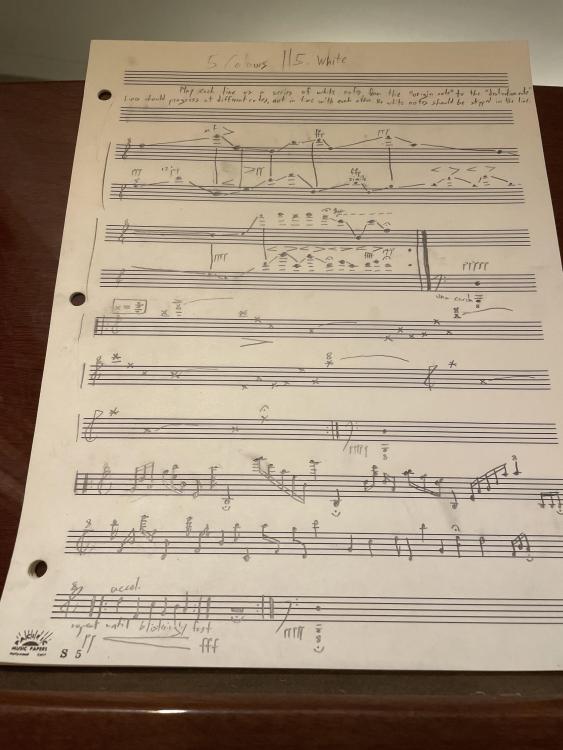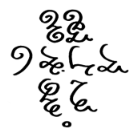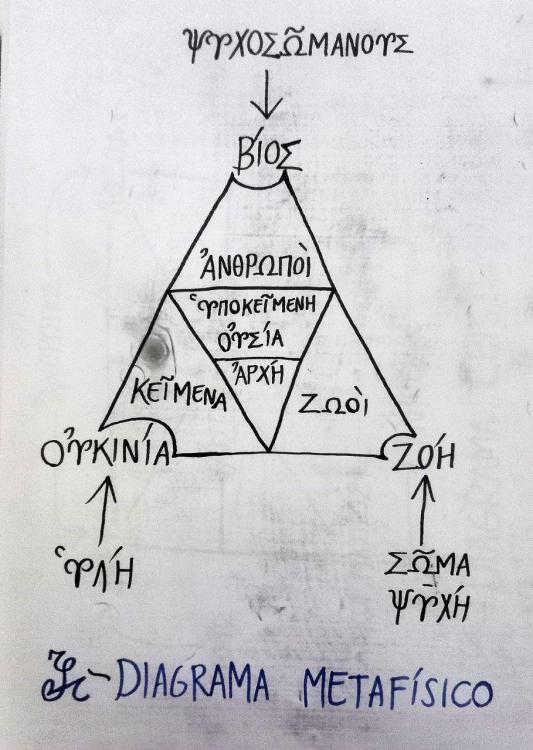Leaderboard
Popular Content
Showing content with the highest reputation on 04/18/2023 in all areas
-
2 points
-
Just a little ditty for piano... nothing serious. Wanted to write something that was relentlessly cheerful! Edit: I noticed after uploading that a few changes I made were not saved before exporting.2 points
-
Hello fellow musicians! I recently found a really nice virtual duduk on the Apple App Store, and here's my first attempt at writing for it. Just a very simple piece with sparse instrumentation; but I think it showcases the haunting beauty of the duduk pipe. I've also used a guzheng and koto as accompaniment. It didn't take long to write, as it's mostly improvised. Maybe I should attempt to extend the piece, or add more layers? Or perhaps you like it just as it is? (Revised versions will be posted further down the thread.)1 point
-
1 point
-
Short original piano composition called "Please!". It is my first composition after a break of 2 years. It is inspired by the music of composers of the romantic era. Another big inspiration was the painting "Lamia" by John Waterhouse. It has the following structure: A - B - C - A' A : Main theme in C Major B : Secondary theme in d sharp minor C : Transition from B to A' in c minor A' : Dramatic variation of A in C Major Thank you for listening! Feel free to comment 🙂1 point
-
Here's a work from 12 years ago which I took a look at with a fresh eye. I decided to add a mid-section(s) ... These are some new ideas ... not yet fully realized. However, some feed back would be welcome. The initial section is finished. I also included a few new measures at the ending. I wonder if that works too. Mark1 point
-
1 point
-
I definitely love those guzheng fillups! It definitely adds more colour to the music when the timbre of duduk is dominating with its plucked sound. I just find the sound of the guzheng overwhelmed in the recording but I guess duduk itself is quite loud in volume in real life. As a brainstorming thought I think of the heterphonic texture frequently used in Chinese music when all the instruments are playing the variation of the same melody idiomatically; but here it won't work since the difference of volume between duduk and guzheng is quite big. Thanks for your update Alex! Henry1 point
-
Hi @Henry Ng Tsz Kiu, Firstable, thanks for granting me so much of your time as it appears you did a quite attentive analysis of my work. About tritones, might be, I've got no academic training in writing, so sometimes I do some little mistakes 🙂 This movement may also lack structure, but it's the way it was born progressively in some quite agitated nights. The clashes between G and F# are intentional ; I regret you not appreciating them maybe the way I do. Orchestration is not perfect, I agree, especially for the clarinet solo, which questioned me about "adequate support" from the orchestra, as you say. Thanks for the arco marking missing 😉 Don't worry, there's no discouragement upcoming, those are just the little pains of growing towards better music 🙂 Have a nice day1 point
-
Hey Alex, I think it does show case the beauty of the duduk pipe even I have never heard of it! Your style of writing suits very well to the sparse quality as you always know less is more and enough is enough without adding too many distracting things. For me you should definitely extend the piece for longer! I feel like you should feature the guzheng more since now the guzheng is only plucking accompaniments for me without using its fuller potential: you should definitely use more appreggios for the guzheng to fill up some of the place in the contrasting section to make it less serene as in the first section. Glissandos are important in guzheng music as well! Probably some harmonics as well. But as you feature the duduk pipe more so my suggestion is not a must, but as a Chinese I really love to have the guzheng feature more! Thanks for sharing and hopefully seeing your update! Henry1 point
-
The title says it all: three valses, meant to be played as separate movements. I have quite thoughtfully polished the presentation of this one, as one might notice right after going through the entire PDF file and past the cover. The names of the pieces mean, in due chronological order: "The dance of the mannequins" in French, the "The hilly journey of a stagecoat" in German, and "The clockwork's pendulum" in Italian. Enjoy!1 point
-
Now I see what you mean in the second diagram. But for my understanding of Kantian epistemology, perception only provides half of the material of the knowledge, and the another half is the knowing mechanism of human beings, and Kant represents them in a diagram of 12 categories which is crucial for our knowing process, though the diagram does not necessarily all the human categories. The perception only appears "as given" to us and to perceive them as an object there's already a secret usage of the category, for example to perceive a tree our mind has to focus on "the" tree and put it under the entity of the quantifier "one". The division of objective and subjective seems not too appropriate for me, It's objective since it's intersubjective: to use Kant's example: everyone's image of a triangle can be different in their head, but the SCHEMA of it is the same when schema is how the categories relate to phenomena. But you are right on the Aletheia as western philosophy after Socrates are periods of Aletheia when truths are disclosing, but art is to allow the truth to swing between disclosing and veiling. Thanks for your explanation Pabio! Your diagrams are very interesting I will reply more when I have time and hopefully this post won't turn your music away LoL. Henry1 point
-
It's okay. I'll give a comprehensive yet brief explanation on the subject and then leave you with another treat 😉 The first image is what I call "the Cycle of Dychotomies." It's a collection of platonic and aristotelic terms which group radially and form opposites, just as was the way of Heraclitus. Example: episteme vs. doxa on the central axis, which are opposed levels of abstraction according to Aristotle. Episteme means "science", whereas doxa means "opinions". It works that way all around. If there's a sector somewhere, its opposite will be 180 degrees from it on the circle. As for the 2nd image, this one truly is of my own intellectual creation. I'll explain the details: First we have anthropos, a human being representing all of humankind. Anthropos, as a learning subject, has two sides: skepson and doxon. For now, all you need to know is that the Skepson is objective and thus connected to the mind (Nous), whereas the Doxon is subjective and is connected, thus, to the pathic soul (Psyche). Perception, as you aptly translated is in the center, for it connects to most elements within the diagram. When the Skepson half of Anthropos acquires knowledge through perception, that kind of knowledge is undergoes particularization (kommatisis), and is thus reduced and incomplete, for it only specializes on few perspectives of any given phenomenon at once. But, when the Doxon half learns new knowledge, it stays with Anthropos as a vital experience for the reast of their lives: it is Pankhoreton, which is a self-coined term in Ancient Greek meaning something on the line of "That which encompasses all" or "That which turns out to be holistic". Lastly, Heidegger's term Aletheia, which refers in this context to the Greek concept of Truth (it literally means "That which is not veiled/hidden" in terms of its etymology), is the sum of Kommatisis and Pankhoreton. This diagram, in essence, represent my own version of Kant's "Copernician turn" in Epistemology, though I am certainly not that entitled to such an expression at all. It represents a returning to the Ancient Greek and Classical ideas and questions which Western Civilization has long forgotten or tried to actively detract from. Here's my next diagram (sorry for all the graphite patches). Do your best! 😉1 point
-
Hi @veps, Wow for sure the opening glissando makes great effect in the high register like thoughts flowing. The thicker chords in the next section is more contemplative for me. With shorter note value in the last section it does make the music more flowing and your ending note on a low chord is great. Overall it will make a very great therapeutic piece and it leaves space for one to contemplate and ponder. Thanks for your sharing and hopefully there's no.2 and 3 if you can find them out! Henry1 point
-
Very cool music I really enjoyed the variety of melodic shaping you had, and the phrasing seems spot on. I'm currently writing something of this style, and am always re-evaluating enharmonics since I'm using lots of flats. Seems like Peter addressed some things I was going to mention though. Musically, it's wonderful. Very serene and peaceful. Thanks for sharing!1 point
-
Hey there I can't remember if I commented on your music before. It's mostly because you generally write in a style I'm not too interested in. That's not to say your music is bad... quite the contrary. I've studied Bach and counterpoint while in school, and I always thought it was elegant and pretty, but the dense counterpoint was something I respected, but didn't find that interesting. Most of what I've heard from you are fugues and music drenched in the Baroque style. Even if I haven't said anything, that doesn't mean I haven't heard your music. I've heard a lot of your stuff, and it's all great. I just don't respond to music that I feel like I don't have much to offer. You seem to be a wizard of counterpoint, and there's nothing I could really say to help you out. But the reason I'm saying all of this is because of this post. I've known plenty of composers who craft only baroque-era counterpoint, and yeah that's great, but you have more to offer. You gave us 3 waltzes, all finely crafted, when I thought that you couldn't share this side of you. These are great, and after listening to them several times, I'm happy to say that your craft is outstanding. I love everything you gave us here, and you have shown a side that I didn't know you had. Well done, and thanks for sharing these. Made my night.1 point
-
Oy I like the cheery quality, lots of brightness and playfulness with the piano writing. The stretches seem a bit difficult at times with the tempo, but definitely enjoyable. The arpeggio themed rhythm at b. 13 was really cool, and I like the miniature ABA vibe. Thanks for sharing!1 point
-
Hi Bryan, It IS really cheerful for me! You may think it a trifle but it's definitely not a trifle if it's played in real life since it's quite difficult! The middle voice reminds me the school bell particularly the figure in b.1 and 2. Maybe that's a quit for a school life LoL! Of course the voice leading can prevent those parallel octaves like in b.4 but it's just a witty piece so I don't really find them bad at all! What I love most is the middle section where you use quartal and quintal harmony well and making the music playful and witty. Thanks for sharing! Henry1 point
-
Great piece of music.... absolutely loved it! The interplay between the instruments is great and I enjoyed the slower section breaking up the more rhythmically charged section. I agree with Henry that the fugue doesn't sound "modern"... it's actually giving me Monteverdi (that's a compliment). Even with the twelve tone atonality happening, the accompanying voices create a very late renaissance harmonic feel. It's really beautiful! P.S.... I didn't notice it at the beginning, but because you repeat the phrase a few times coming out of the slow section, I'm hearing a little The Barber of Seville there.1 point
-
It is also good, and a good improvement in terms of following initial track mood from the first one. But I suggest you doing this for developing your skill of developement of a piece: 1. Start the initial theme exactly like it is in the original track. Exact notes. 2. Start building a few variations (let's say 4) variating this theme using several violin techniques one-by-one. For example you can go in first variation with harmonics, then in second you can do tremolo, in third pizzicato and in fourth con g string. It is really important to differ theme little by little in those variations, so it won't be boring and ridiculous. 3. Start building more variations (let's also do 4) variating theme using more difficuld techniques f.e. : double stops, octaves, ricochet, left-hand pizzicato. 4. To bring it to a pinnacle you can do a polyphonic variation (Bach pieces must be studied) and you may also follow this by a fanfare-like variation using only chords but taking rhytmical sense of the original composition. 5. End it off as you'd see fit. That alone would build you a large developed caprice-like piece. Take your time thinking about your concept of the piece, there is no need of rushing through. Wish you luck.1 point
-
Hi @bkho, Apart from my review I just want to add one thing: your music brainwash me, as when I was working today this track spontaneously played itself in my brain. For me the issue is only structural which does not quite affect how effective the music is. It's great to write music like this within 2 weeks' time so congrats on this! Henry1 point
-
Well I don't know Greek Alphabet at all and I try to decipher your graph characters by characters by viewing the wikitionary and guessing. So far I only get in the second diagram it's on epistemology with perception as the central word: bottom process is the Aletheia frequently used by Heidegger, the right one Psychi. The others I cannot really discern what's the meaning so forgive me on that haha! Henry1 point
-
Hi @alex2east, This is for sure pleasant listening! Like Peter said it's lyrical and romantic and I enjoy this. I love how use F minor chord in the otherwise peaceful first section. (I just use the enharmonic suggested by Peter since it's more of a habit to use flats there). I like your modulation to D sharp minor very mature as it's not artificial and forceful at all! The use of Neapolitan sixth in b.36 is very Schubertian for me as it reminds me his Impromptu in G flat major. I like the 2 against 3 rhythm in b.59. The ending is good as well, except I may want a rit. near the end! Thanks for sharing! Hope this first piece after 2 years inspire you to compose a lot more and share it here! Henry1 point
-
why re-hash the musical constructs that were established over the recent and not so recent past? schoenberg came to the conclusion that old forms and ideas had been exhausted and that new 'paths' should be sought. sounds good. then again, not everyone has experienced those old forms in full. if someone today can write a piece of music as artistically valid and interesting as, say, Beethoven, then perhaps today's listener may as well listen to that instead of that old master? whatever your conclusion on this may be, i ask you this: is the world a stage upon which we are only players? to what end is it that any of us exist?1 point
-
I made some edits to the first movement and composed a fugue as well as coming up with some program notes: This two-movement work for brass quintet features the driving Allegro and complex Fugue. The Allegro features some strong rhythmic playing broke up by a section that is reminiscent of a canon with lines and voicings that draw a lot of influence from George Gershwin. The subject of the Fugue is a twelve-tone row of Eb, G, Db, F, B, Bb, D, Ab, F#, A, E, C. Despite a modern concept of the twelve-tone system, most of the traditional rules of the art of the fugue are followed creating a unique juxtaposition of an old form with a new sound that is fitting for the brass quintet repertoire.1 point








